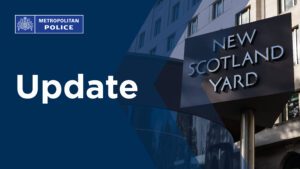 The Metropolitan police has launched a review into the investigation of the car crash that killed two school girls in Wimbledon on 6 July 2023.
The Metropolitan police has launched a review into the investigation of the car crash that killed two school girls in Wimbledon on 6 July 2023.
Nuria Sajjad and Selena Lau, both 8, died after a vehicle veered off the road and crashed through the fence of The Study Preparatory School while they were outside for an end-of-term tea party.
On 26 June 2024, the Crown Prosecution Service (CPS) announced that the driver of the vehicle involved in the crash, Claire Freemantle, would not be charged. Medical examination had shown that she had an epileptic seizure at that time of the crash and was “in no sense in control of the vehicle”.
The CPS ruled that there was no evidence that the driver had had any previous seizures and she was not diagnosed with any medical condition. Following the incident, she was diagnosed with epilepsy.
The families of the children have raised concerns over the police investigation, which have sparked the review from the Met. In a statement, it said: “Having listened to concerns from the families of both Nuria and Selena – and other parties affected – we are committed to addressing their questions, and the Specialist Crime Review Group (SCRG) will therefore be carrying out a review of the investigation.”
David Thornton, Helpline Team Leader at Epilepsy Action, said: “We receive many calls to our helpline about the driving rules for people with epilepsy. The tragic case in Wimbledon highlights that a seizure can happen to anyone at any time, and can bring with it a devastating impact. We want to share some of the rules and regulations about driving and epilepsy.”
Driving rules for epilepsy
Epilepsy can affect anyone at any age. Seizures can be sudden and with no warning. People who have had a seizure must tell the driving agency (DVLA or DVA) about this and Epilepsy Action advises that they surrender their driving licence. Otherwise, it may be revoked, and it may take longer for the person to be able to start driving again if they meet the driving rules later.
If a person has had a first seizure but has not been diagnosed with epilepsy, they may be able to get their group 1 (car and motorcycle) licence back sooner than 12 months, depending on what medical tests show and the clinical opinion of their doctor.
The driving agency’s driving rules are different depending on the types of seizures a person has. If a person has seizures that happen while they’re awake and affect their awareness, they need to be seizure free for at least 12 months before they can drive a group 1 vehicle again. Doctors and the driving agency agree that risk is very low once someone is seizure free for 12 or more months.
People who have seizures in their sleep may be able to drive. The driving agency will investigate this. The rules say that people may be able to drive if they have been having sleep seizures for at least 12 months and have never had awake seizures. If they have had awake seizures in the past but have only had sleep seizures for at least three years, they may also be allowed to drive.
People may also be able to drive if they only have seizures that don’t affect their awareness, depending on what happens during those seizures. A person may be allowed to drive if they are fully conscious and aware of what’s happening, don’t lose control of their movements during these seizures, have been having these types of seizures for at least 12 months and have never had any other types of epileptic seizures.
There is more information on the driving rules, driving for work and group 2 licences on the Epilepsy Action website.

